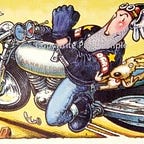The Virgin of Mandalay
When I visited Burma, millions of people still lived in wood and grass huts, ploughed the paddies with buffalo, and used trains left by the British when they were kicked out in 1948.
As well as being wracked by a variety of ethnic insurgencies, many parts of the country live in feudal, medieval poverty, with many dying of easily preventable diseases like malaria.
Being there was a smack in the face for a naive visitor from aseptic and organised Singapore.
In Yangon, I peered across the lake to the house where Aung San Suu Kyi was imprisoned. I wandered through Bogyoke market and saw bare-footed men touting pearls and rubies big as sparrow’s eggs. I ate fermented tea salad, and marvelled at elegant pagodas surrounded by rooting pigs.
The carefully managed hotel I stayed in had no telephone connections, no credit card capability, and was built on an isolated (and highly observable) site outside the city. It was like being in East Germany, 1961.
Thin, my host in Burma, and her family had decided to venture up country on an expedition to honour her father, and while they were at it to visit some relatives in Mandalay.
I was lucky enough to go with them. We trekked for hours on remote dirt roads, stuffed ourselves with spicy fish dishes at open-fronted stalls overlooking the fabled Irrawaddy River, and waved to dozens of excitable kids working in the fields, grubbing sand from riverbeds, or making bricks at the side of the road. They all looked about 10 years old.
The people of Mandalay have, over the centuries, earned a deserved reputation for artistry and handcrafts of the most elegant kind. Jewellery, textiles, umbrellas, wood and stone carvings — you name it, they do it. The sound of tapping chisels, roaring burners and whirring hand looms drifted out of doorways on every street as we arrived.
The army’s decision to cut off Burma from the rest of the world meant that almost all of these trades had to either work with very old and patched machinery, or to create everything by hand.
Men spun bamboo threads into bangles with their toes. Ring makers forged incredibly delicate ornaments using tiny table-top claypot furnaces, and their teeth. Longyii cloth weavers used hand looms made of wood decades previously. It was like a micro-industry museum.
In one workshop we passed, things were on a different scale. A massive block of pure white marble was sitting in a courtyard, surrounded by a web of bamboo and teak scaffolding nested with a small army of stonemasons. They were all tapping and rubbing away with chisels and files and sanding blocks at the final stages of a huge yet perfectly proportioned statue of Buddha, about four metres high.
We were supposed to be out for a short pre-dinner walk, but this was so amazing I asked if we could stop to let me have a look at this astonishing spectacle. Aung, Thin’s uncle, shouted through the gate above the tip-tapping din, a lady nodded and we went in to see Buddha being born. It was Christmas Eve.
Seeing this massive statue emerge from a simple block of stone using only hand tools was incredible. Even more incredible was the rest of the workyard. It was bursting with tiny, medium-sized and downright portly statues of Buddha. Seated, lying, standing, waving and blessing — he was everywhere, in various stages of emergence from solid lumps of rock. Dust, cobwebs and chippings lay on all sides as delicate-handed final finishers rubbed the Big Man to a satin gloss, ready for supplicants to kiss and anoint with oil and flowers. And absolutely, absolutely everything was being done by hand. I shook my head with amazement as we wandered about the yard.
One of the owners of the place came up to us with a wrapped bundle, and gestured for me to unwrap it. Inside was an unfinished statue, still at the rough-chiselled stage but easy to recognise — it was the Virgin Mary. I’m guessing it was the only non-Buddha in the place, mainly due to the fact that almost everybody in Burma is either Buddhist or Muslim. It looked like it had been abandoned for ages, lying rejected and half-finished in a dusty corner, judging by its grubby and unloved appearance.
Aung translated what the owners were telling him. “They say they know it is your Christian Christmas and you are a long way from home, so they would like you to have it,” he said.
I wasn’t that keen to take a massive, heavy lump of dirty half-finished religious iconism back home with me, so declined politely. Aung, relaying my response, became engaged in a protracted (and I hoped, not too embarrassing) exchange as a result.
We finished our walk, ate more food, and eventually it was time for bed back at my hotel. I lay listening to the early evening hiss of burners, tapping of chisels and soft whisper of foot-driven machinery overlaid by a lilting tide of Burmese conversation. I thought of my family.
Back home, parents would be wrapping their kids’ presents. Despite the good fortune of being in this amazing place, probably much the same as it was when Kipling was posted here, I felt a bit homesick.
Next morning I got up and walked into the breakfast room as the hotel owner came in, carrying a roll of longyii fabric. He walked over, and presented it to me — but I nearly dropped it, it was so heavy. “Happy Christmas,” he said with a grin. “The carving people sent this.”
Inside was a gleaming smooth, perfectly finished and lovingly polished statue of the Virgin Mary. I still have it.
For more photos, click HERE. For more of my stories, click HERE.
